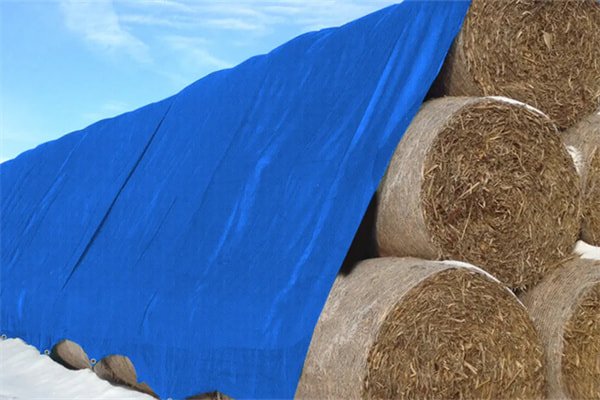Properly storing hay is essential for maintaining its quality, preventing spoilage, and ensuring that livestock receive nutritious feed throughout the year. One of the most effective ways to protect hay is by using high-quality hay tarps. Selecting the right hay cover tarps can make a significant difference in durability, weather resistance, and overall cost-effectiveness. This guide will help you understand the key factors when choosing hay tarps for your farm.
1. Consider the Material
Hay tarps are typically made from polyethylene, vinyl, or reinforced fabric. Heavy duty hay tarps usually feature reinforced polyethylene with UV inhibitors, making them resistant to tears, mildew, and sun damage. When selecting hay cover tarps, consider the climate and storage conditions. For areas with heavy rainfall or snow, opt for a tarp with waterproof and UV-resistant properties to protect your hay year-round.
2. Size and Coverage
Choosing the correct size is crucial for effective hay protection. Measure the dimensions of your hay stacks, bales, or round hay piles to ensure the tarp fully covers the top and sides. A poorly sized tarp can leave hay exposed to moisture and pests, reducing its quality. Hay tarps come in a range of sizes, so selecting one that matches your farm’s storage needs is essential. Heavy duty hay tarps are especially useful for large hay stacks, providing full coverage without tearing or sagging under harsh conditions.
3. Durability and Weight
Durability is one of the most important factors when choosing hay tarps. Heavy duty hay tarps are designed to withstand extreme weather and repeated handling. Look for features such as reinforced corners, metal grommets, and double-stitched seams, which help prevent tearing. Lightweight tarps may be easier to handle but often lack the durability needed for long-term use. Investing in robust hay cover tarps ensures your hay remains protected season after season.
4. Ease of Use
A tarp that is difficult to secure or remove can be frustrating and time-consuming. Consider tarps with built-in grommets, tie-downs, or elastic edges for easier installation. Some hay tarps also feature vented designs that allow airflow while keeping rain out, preventing mold growth. Choosing a tarp that balances protection with ease of use will save time and reduce labor on your farm.
5. Cost vs. Longevity
While it may be tempting to choose the cheapest hay tarps available, it’s important to consider long-term value. Heavy duty hay tarps may have a higher upfront cost, but they typically last longer and provide better protection against weather, pests, and UV damage. Investing in quality hay cover tarps reduces the risk of spoiled hay, ultimately saving money over time.
6. Weather Considerations
The local climate should heavily influence your choice. In regions with high winds, select hay tarps with strong grommets and reinforced edges to prevent them from blowing away. In areas prone to heavy snow, a thicker tarp is recommended to bear the weight of accumulation. Hay tarps that are resistant to UV, water, and mildew will ensure that your feed stays safe and dry regardless of the season.
Conclusion
Choosing the right hay tarps for your farm requires careful consideration of material, size, durability, and ease of use. Hay cover tarps and heavy duty hay tarps play a vital role in maintaining the quality of your feed, protecting it from weather, pests, and spoilage. By investing in high-quality tarps suited to your farm’s specific needs, you ensure that your hay remains nutritious and safe for your livestock, providing peace of mind and long-term savings.
By following these guidelines, farmers can make informed decisions when purchasing hay tarps, maximizing both efficiency and protection. Remember, a well-chosen hay tarp is an investment in the health of your herd and the success of your farm.
